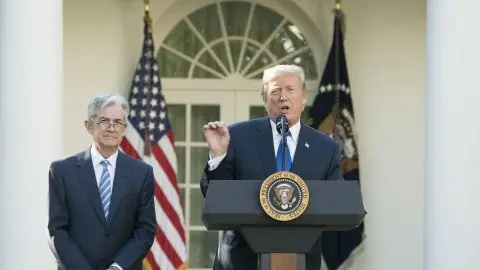Three takeaways from the Bank of England’s August meeting
Despite an upgrade to growth and inflation forecasts, the Bank of England's latest announcement makes it fairly clear that rates are likely to remain on hold for the foreseeable future
There's little doubt the August meeting was an awkward one for Bank of England policymakers. The sharp fall in market rate expectations has translated into higher growth and inflation forecasts in 2-3 years time. In normal times, this might be interpreted as a hawkish signal to markets - an overheating economy theoretically needs a greater degree of tightening.
But as the Bank is at pains to point out, policymakers are assuming a smooth Brexit path - whereas markets (and their expectations for interest rates) increasingly are not. With Brexit uncertainty set to intensify, we think it is very unlikely the Bank will embark on the tightening that it is still loosely signalling in its statement. Equally though, we think it's too early to be pencilling in rate cuts, given the likelihood that wage growth will continue to perform solidly over coming months.
A flatter yield curve boosts growth and inflation
The significant flattening in the UK interest rate swaps curve – a gauge of market expectations for future interest rates – since May has given both Bank's growth and inflation a modest boost in 2021/22. That's helped along by the fact that wage growth is expected to strengthen further from here. Skill shortages in the jobs market have already seen wage pressures build, and the BoE expects total pay to increase at a rate of 4% year-on-year by 2021.
Inconsistent Brexit assumptions mean the forecasts aren't as hawkish as they sound
In times gone by, that might have seen policymakers vocally push back against current market pricing, and warn that markets are too relaxed about the possibility of tightening. Unsurprisingly though, the Bank has opted against sending such a signal this time.
The BoE’s forecasts are premised on Brexit going smoothly – something that looks increasingly questionable. Policymakers have devoted an entire paragraph to explain the “inconsistency” that exists within their forecasts, which essentially boils down to: our models assume that Brexit will go smoothly, whereas the market’s expectations for the future path of interest rates do not.
Business investment forecast slashed
All of the above shouldn't come as too much as a surprise to markets - the challenge for the Bank today was always going to be marrying together the more hawkish forecasts, and the more cautious short-term outlook, without stepping into the political arena.
What is a little more surprising is the extent to which the Bank has cut back its business investment forecast for 2020. Having previously expected capital spending to grow by 3% next year, it now expects it to fall by 1.5% - a pretty substantial change. The follows a new survey of businesses by Bank Agents, which found that even in the case of a deal being struck, on balance firms did not expect to increase investment.
To us, this suggests that interest rates are likely to remain on hold for the foreseeable future. While the Bank's forward guidance notionally points to further tightening, we think the mounting uncertainty related to Brexit - even in the case Article 50 is extended further, or where a deal is agreed - means this is unlikely to materialise.
Business don't expect investment to increase, even if there's a deal
Net balances of firms

This publication has been prepared by ING solely for information purposes irrespective of a particular user's means, financial situation or investment objectives. The information does not constitute investment recommendation, and nor is it investment, legal or tax advice or an offer or solicitation to purchase or sell any financial instrument. Read more
Download
Download snap
1 August 2019
In case you missed it: When trade, markets and the Fed collide This bundle contains 8 Articles